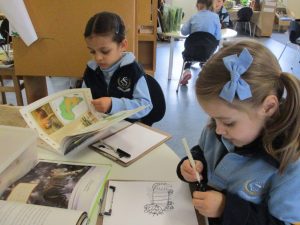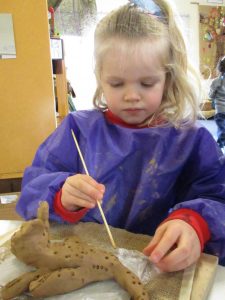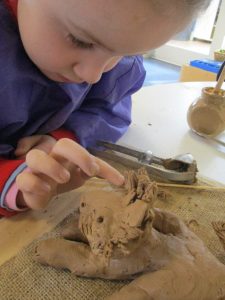The Language of Clay

Clay “… can be used in such an immense number of ways that the possibilities for discovery and learning are almost endless…the three-dimensional properties which it offers in the exploration of form, space, texture, weight and structure are of special value.” – Clough, 1996.
This week, educators intentionally reintroduced clay to the children in the Banksia Room with a selection of books about animals, connecting to the children’s interest in the jungle. The clay provides the children many opportunities to be creative and can result in longer attention as they work to finish a set task. The initial step in their clay sculpture is to plan what they are going to make.
The children used the provided books as a reference for details in their clay sculpture plans. Educators are verbally scaffolding the children’s drawing by encouraging them to observe the fine detail within the images of their chosen animal and add these to their plan.
Upon completion of their plan, the children are working with an educator to create their animal. As the children work with the clay, the educators are explaining in step by step instructions, asking the children to refer to their plan, and role-modelling clay sculpture techniques to support the children and their creation of their clay animal. We will coordinate with the Senior School Art Faculty to ‘fire’ their sculptures.





